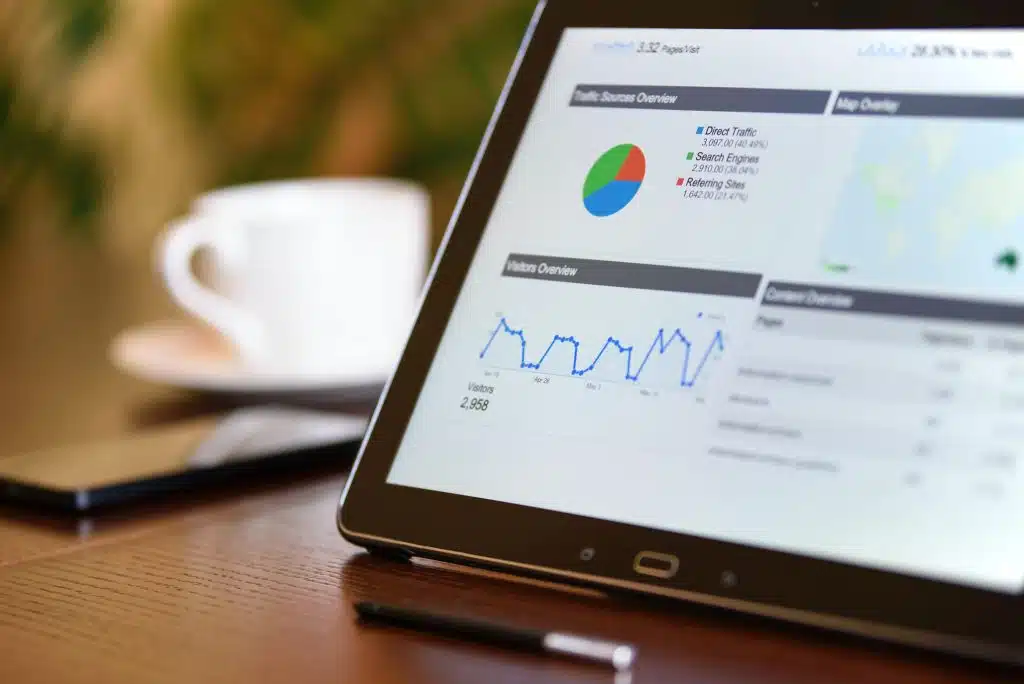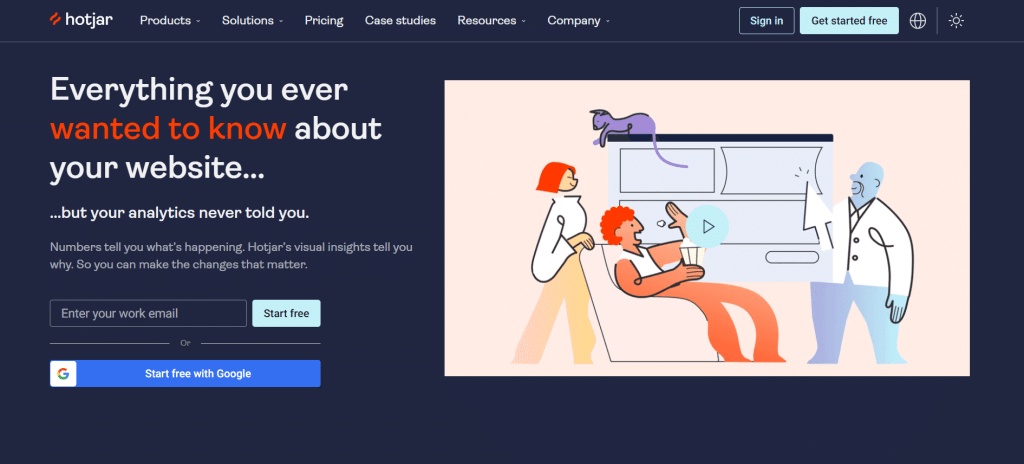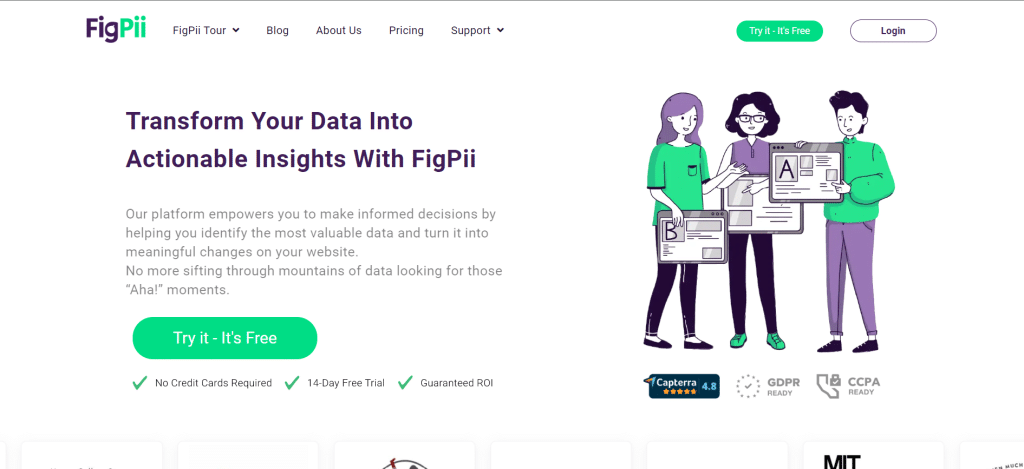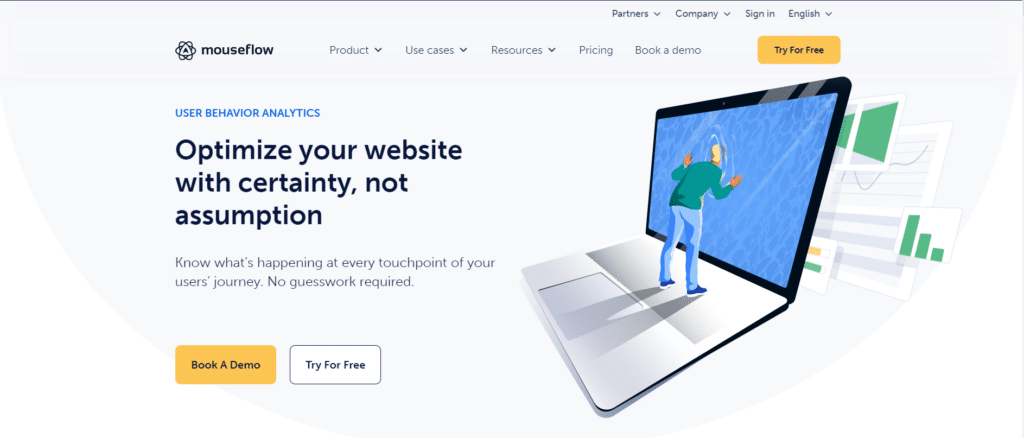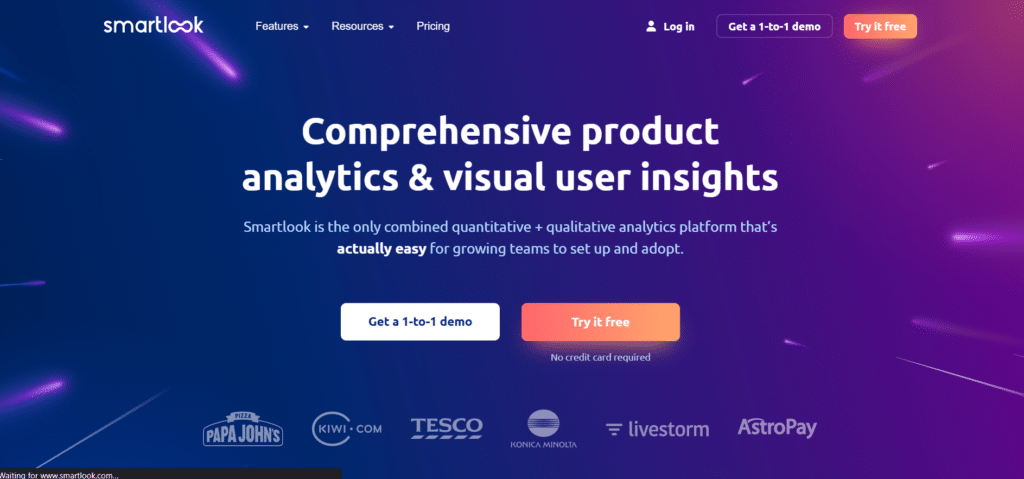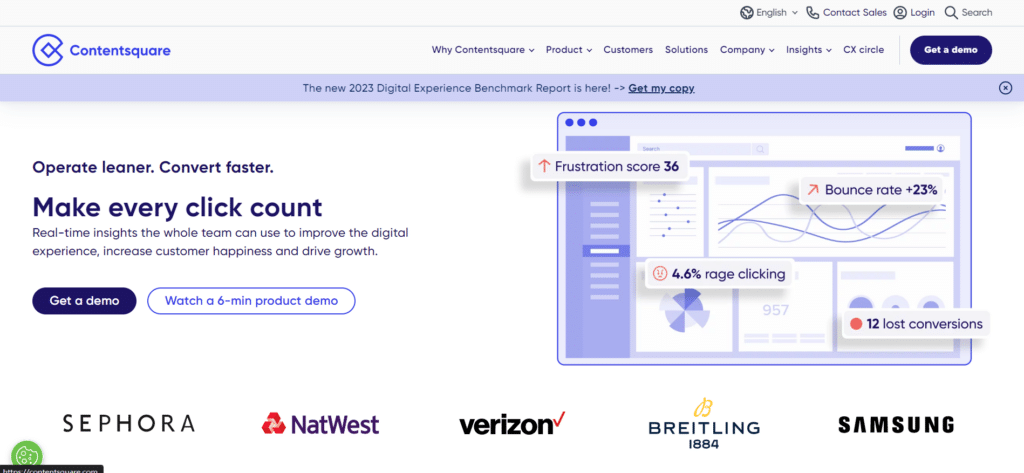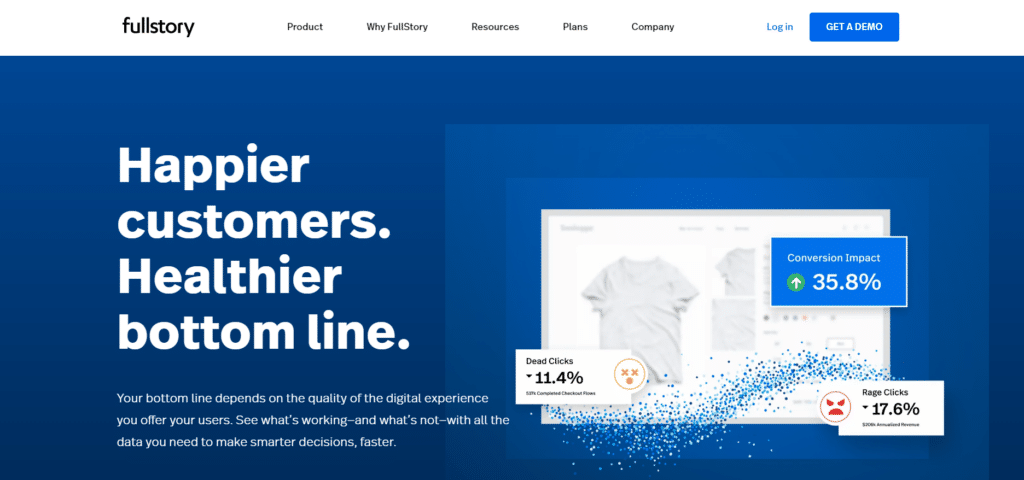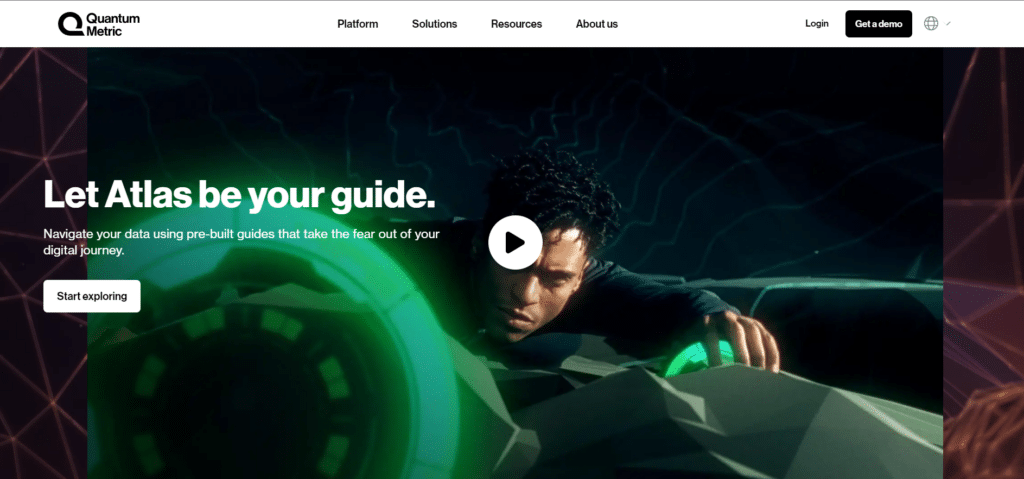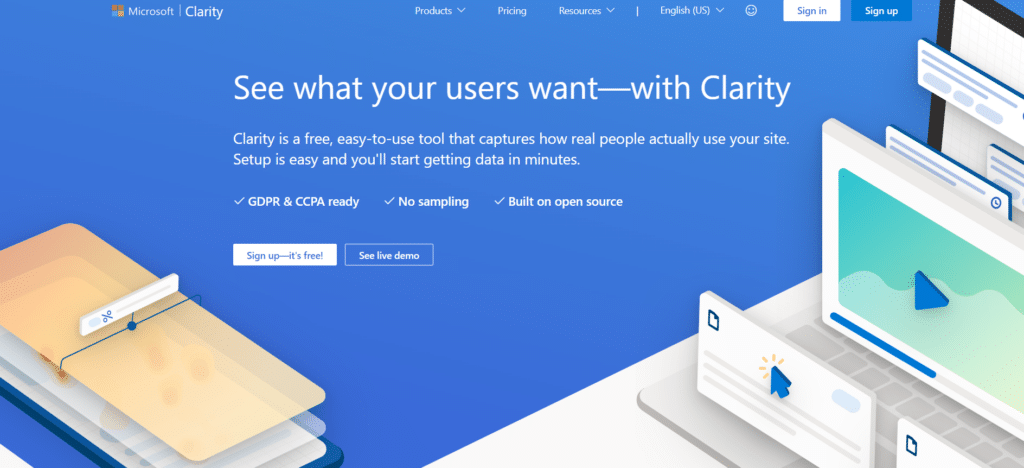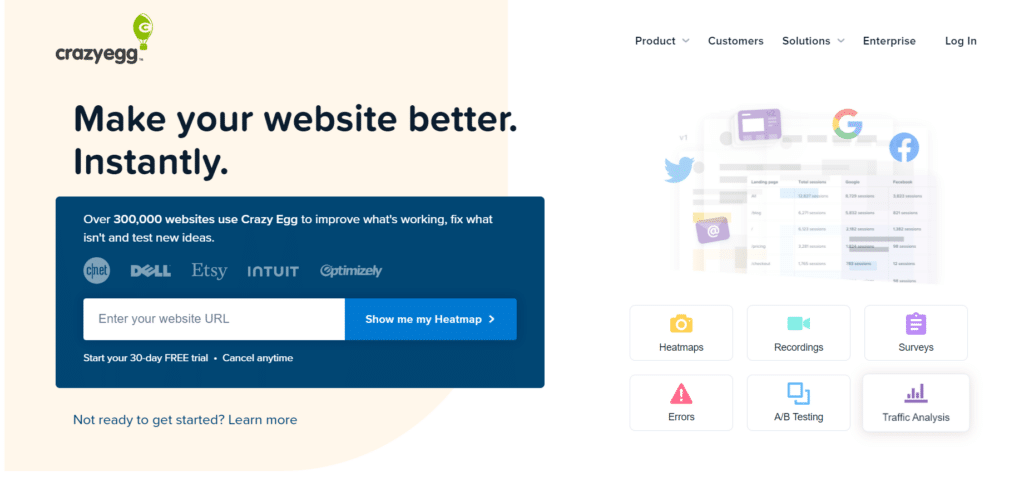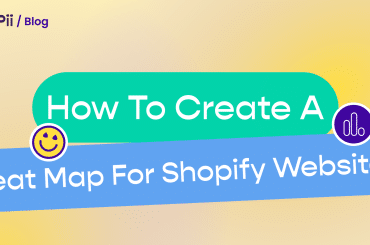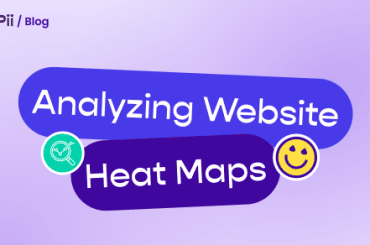Have you ever wondered if your conversion was a result of a properly placed CTA or if it was just dumb luck?
Or maybe it wasn’t the CTA at all.
Could it be the headline change that hooked your readers?
Now, you probably wish there was a way to discover which areas of your website have the highest engagement and which areas are causing users to bounce.
Well, guess what? It exists!
Heatmaps allow you to track where and when their conversions happen and how users interact with each element of your website.
They help you discover where users’ eyes are fixated on your site. What’s more, they highlight which portions of your website are top-of-the-funnel and which high-priority areas need more attention.
Luckily, the internet is inundated with plenty of heatmap software. However, the sheer number of options might even overwhelm you.
This article lists some of the best heat map tools on the market based on their key features, pricing, G2 score, pros, and more.
Before that, let’s learn a bit more about heatmap platforms.
What is a Heatmap Tool?
A heatmap is behavior analysis software that helps determine how your website visitors interact with individual web pages.
Suppose you want to ascertain which areas of a web page get the most attention. In that case, the heat map software will show you a graphical representation of data where values are categorized by different colors.
The most popular elements are depicted by hot colors, while the least popular elements are depicted by cold colors.
Most of the heatmap software comes with three major types of heatmaps:
- Scroll Maps – In the case of scroll maps, the colors depict how far the visitors scrolled on your web page.
- Click maps – These heatmaps show how many website visitors clicked on different parts and elements of your web pages.
- Movement Maps – It shows where users are spending and hovering the most on your web page.
This is what a typical movement-based heatmap looks like:
This type of pictorial representation naturally makes it easy to understand behavior patterns and make decisions. You can see what needs to be improved and optimize and refine your site accordingly.
Are your CTAs placed correctly? Are visitors even reaching an important CTA? These heatmap tools will help you identify all such issues and increase your conversion rates.
What Features Do The Best Heatmap Tools Have?
Here are the best features that you can look for while choosing your heatmap tool:
- Easy Installation – You want to use a heat map tool that is easy to install, and the setup can be using one script only. It should also support multiple platforms simultaneously.
- Real-time Analytics – This feature will ensure that all the reports get updated with real-time data. Only a maximum delay of 1 minute should be acceptable. The real-time website analysis will help you enhance your visitors’ experience by resolving issues quickly.
- Download and Share Feature – Heatmaps are often used in presentations. Thus, you should be able to download generated heat maps or send public links to your teammates and clients.
- Flexibility – The tool should be flexible enough to let the dashboard admin view reports with easy navigation on the dashboard.
- Audience Segmentation – If your Heatmap has audience filtering or segmenting capabilities, you will be able to find the precise audience you’re targeting. Your software should be able to segment and filter heatmaps based on devices, user behavior, location, etc.
- Powerful Integrations – The platform should be able to integrate with the other business tools you are using or intend to use. For instance, it should be able to share insights over Slack or run tests with Optimizely.
- Cross-Platform Tracking – A heatmap with a cross-platform tracking feature allows you to collect information about the behavior and interaction of website visitors browsing from different channels like desktop, mobile, and tablet devices.
Many heat map tools also come with additional features like session recordings, A/B testing, and the ability to run web-based surveys in real-time.
Heatmap Tools Software Comparison.
Here’s a quick comparison of the heat map tools we’ll be covering in this article:
| Free Version | Capterra Score | Scroll Map | Click & Tap Map | Mouse Movements | Real-Time Analysis | Cross-Platform Tracking | Audience Segmentation | Cost For 10,000 visitors/mo | Cost For 100,000 visitors/mo | |
| Hotjar | Yes | 4.7 | Yes | Yes | Yes | No | Yes | No | ||
| FigPii | No | 4.8 | Yes | Yes | Yes | Yes | Yes | Yes (different traffic sources, new visitors, returning visitors, etc.) | $49.99/mo | $339.99/mo |
| Mouseflow | Yes | 4.7 | Yes | Yes | Yes | Yes | Yes | Yes (country, traffic source, new vs. returning visitor, etc.) | $79/mo | $299/mo |
| Smartlook | Yes | 4.7 | Yes | Yes | Yes | No | Yes | Yes (first time vs. new visitors) | ||
| Contentsquare | N/A | 4.8 | Yes | Yes | Yes | Yes (With the browser plugin) | Yes | No | Quote-based | Quote-based |
| FullStory | Yes | 4.6 | Yes | Yes | Yes | No | Yes | Yes (visitor behavior, time, geography, device type, referral channel, etc.) | Quote-based | Quote-based |
| Quantum Metric | N/A | 4.7 | Yes | Yes | Yes | No | Yes | No | Quote-based | Quote-based |
| Microsoft Clarity | Free tool | N/A | Yes | Yes | Yes | No | Yes | Yes (device type, time frame, user actions, operating system, browser, country, etc.) | Free tool | Free tool |
| Crazy Egg | No | 4.5 | Yes | Yes | Yes | No | Yes | Yes (22 filters) | $24/mo | $99/mo |
This was the comparison of some of the most prominent features and elements at the heart of every heatmap tool.
However, most of these website heatmap tools offer much more to help you analyze lead behavior and provide the best possible user experience.
Let’s see how these heatmap software tools stack up against each other when it comes to additional analysis features.
| Built-in A/B Testing | Session Recordings | Feedback Surveys / Polls | Data Storage | |
| Hotjar | No | Yes (100 recordings/day with the base plan) | Unlimited (with all plans) | Up to 365 days |
| FigPii | Unlimited (with all plans) | Yes (Unlimited with all plans) | Unlimited (with all plans) | Up to 2 months |
| Mouseflow | No | Yes (500 recording/mo with the free plan; 5000 recordings/mo with the base plan) | Yes (1 – unlimited, varying with the pricing plan) | 1 month – 12 months (varying with the pricing plan) |
| Smartlook | No | Yes (1,500 recordings/mo with the base plan; 7,500 recordings/mo with the base plan) | No | Up to 1 month |
| Contentsquare | Yes | Yes | No | Up to 13 months |
| FullStory | No | Yes | No | N/A |
| Quantum Metric | No | Yes | No | N/A |
| Microsoft Clarity | No | Yes | No | N/A |
| Crazy Egg | Unlimited (with all plans) | Yes (100 recordings/month with the base plan) | No | 3 months – 2 years (varying with the pricing plan) |
Now, let’s analyze all these heatmap platforms in detail.
What Are The Best Heatmap Tools?
These are my top picks for the best heatmap platforms:
1. Hotjar
Best for Marketers, Product Managers, and UX Designers.
Hotjar is one of the most popular heatmap software platforms on the market. And not without reason!
Hotjar’s built-in heatmaps give a complete overview of how visitors behave on your website, including their clicking, moving, and scrolling patterns. This helps you identify what captured your potential customers’ attention the most and follow up accordingly. At the same time, it also gives you an idea of where your users are bouncing off the most.
It’s also worth noting that the platform’s visual UI makes everything straightforward – no coding or technical know-how required. You can see the elements that capture maximum attention at a single glance clearly.
On the reporting side, you get access to live recordings of visitors rather than mere graphical representations.
Other than this, Hotjar allows you to upload personal data (user ID, purchase info, email address, etc.) using Hotjar’s Identify API.
Pros:
- 15-day free trial
- Export reports in CSV or XLSX format
- Extensive integration with popular platforms like Slack, Optimizely, HubSpot CRM, etc.
Pricing:
Hotjar offers five total plans.
For Personal Use:
- Basic – Forever Free
This freemium plan allows 2,000 page views per day and creates up to 3 heatmaps.
- Plus – $39/month
The Plus plan is suitable for low-traffic sites. It allows 100 full user sessions per day and continuous Heatmaps across all your pages.
For Business Use:
- Business – $99/month
Suitable for businesses of all sizes, this plan allows 500 full user sessions per day and continuous heatmaps.
- Scale – $389/month
This plan gives you 4,000 daily sessions, continuous heatmaps, and training with a Hotjar specialist.
For Agencies:
- Agency – Quote-based
Finally, they have a quote-based Agency plan that gives you access to unlimited client sites in one central account. You can upgrade and download this plan anytime you want.
2. FigPii.
Best for Businesses of All Sizes.
FigPii is a best-in-the-breed heatmap and data visualization software. It gives you a clear picture of every aspect of your website visitor’s browsing journey.
FigPii’s intuitive heatmaps help you identify:
- Where visitors click (click data)
- Website elements and information they care about
- Visitors’ browning and scrolling patterns on your site
- Website pages and elements that troubled or confused the visitor
Once armed with all of this pertinent data, you’ll be well on your way to making your page more engaging.
You’ll also get access to scroll maps that will help you identify how far the visitors scroll down your webpage. The maps can be collected from all types of devices.
The colors on the map represent the most (warm colors), and least (cold colors) viewed parts of the webpage.
The software grants access to all types of heatmaps, namely scroll maps, click maps, and mouse-tracking heatmaps.
Additional features include A/B tests, online polls, surveys, and session recordings – all of which are available even in the starter plan. You also get the ability to remove Figpii branding even with the base plan – this is unheard of with most other tools on the market.
Pros:
- 30-day money-back guarantee
- 14-day free trial
- Easiest to use and setup (Excellent UX)
- Quick IP targeting
- Unlimited number of sessions with all their plans
- Integrates with almost every business tool, including Wix, WooCommerce, Weebly, WordPress, HubSpot, etc.
Pricing:
FigPii offers four pricing plans:
- Starter – $49.99/month (up to 10,000 visitors/month)
- Small – $99.99/month (up to 30,000 visitors/month)
- Medium – $199.99/month (up to 60,000 visitors/month)
- Large – $339.99/month (up to 100,000 visitors/month)
If you want to cater to more than 500,000 visitors per month, you can contact the sales team for the quote-based Enterprise plan.
3. Mouseflow.
Best for In-depth Reporting of Heatmap Metrics.
Mouseflow is another famous heatmap tool on this list that helps you identify why your web visitors aren’t turning into paying customers. It also grants access to form analytics that helps you identify why visitors are abandoning your opt-in forms.
It comes powered with a full suite of five types of heatmaps, namely:
- Click Heatmap – Helps you identify where exactly users are clicking on your site.
- Scroll Heatmap – Shows you how far the visitors are scrolling down your page. It’s also convenient for effective analysis of long-form blog posts and content-heavy pages.
- Attention Heatmap – See how long visitors are spending on your webpage. This will help you identify which page elements receive maximum or least attention.
- Movement Heatmap – See where visitors navigate their mouse on your web pages. Convenient for determining the web pages and elements contributing to maximum conversions and usability.
- Geographical Heatmap – Shows what regions and areas account for most leads and prospects for your marketing campaign.
Mouseflow helps you monitor visitors’ behavior patterns, track activity, and improve the overall browsing experience.
Sure, a lot of other heatmap platforms do that. The heatmap list with a clear summary of all the metrics for different web pages is where Mouseflow stands out.
You’ll get access to key metrics like visit time, views, engagement, total clicks, scroll percentage, and size of the page for all of your web pages. There’s also a “render” metric that measures the page load time for each web page.
Live Heatmaps is another one of its most prominent features. They work as an overlay on your website, showing the mouse flow data as it looks and works when you visit it live. This includes all dynamic elements on your web page like single-page applications, drop-down menus, popups, sliders, parallax scrolling, and more.
Finally, you can filter and sort your heat maps based on devices, location, operating system, browser, traffic source, screen resolution, visitor type, date, and so forth.
Pros:
- 14-day free trial
- In-depth reporting
- Live heat map reporting
- Ability to determine where customers are leaking out
- Integration with prominent CSM tools, e commerce services, marketing software, etc.
Pricing:
Mouseflow has five paid plans:
- Starter – $24/month paid annually (5,000 sessions/month)
- Growth – $79/month paid annually (15,000 sessions/month)
- Business – $159/month paid annually (50,000 sessions/month)
- Pro – $299/month paid annually (150,000 sessions/month)
- Enterprise – Quote-based plan for larger enterprises (200,000+ sessions/month)
While they put limitations on the number of sites you can track based on your payment plan, you can generate unlimited heatmaps with all the plans.
You can also start with their freemium plan that allows 500 sessions/month, one website, unlimited heatmaps, one month of storage, unlimited account users, etc.
4. Smartlook.
Best For Monitoring User Movements on Mobile Apps.
Smartlook is a heatmap tool that can record users on your website as well as on your mobile app. You can leverage their click, move, and scroll heatmaps to understand your web visitors.
You also have the option to record data either from past visitors (from the past 12 months) or new visitors. The ability to choose between all, new, and returning visitors also comes in handy to identify how their behavior differs.
The heatmaps are also segmented based on their type, and device visitors are using.
You can also download different heatmaps separately with a single click on the “Download” button right from the dashboard.
There’s also a built-in session recording tool convenient for finding out everything users do on your site as well as on your mobile app.
Smartlook has a simple heatmap tool with three types of heatmaps – without any bells and whistles. You won’t get any unique or exceedingly advanced heatmap features, which in a way contributes to its ease of use.
The tool is also more focused on event analytics and session recordings than their heatmap tool.
Pros:
- 10-day free trial
- Suitable for beginners
Pricing:
Smartlook offers four pricing plans:
- Free – Forever free (1,500 monthly sessions, 3 heatmaps)
- Startup – $31 per month (7,500 monthly sessions, 10 heatmaps)
- Business – $79 per month (25,000 monthly sessions, 30 heatmaps)
- Ultimate – Quote-based
5. Contentsquare
Best for Analysing Revenue & Conversion Delivered by Each Page Element.
Contentsquare provides zone-based heatmaps that specifically analyze how visitors interact with each element on your web page.
It aggregates visitors’ behavior by tracking behavior patterns like clicks, hesitations, and scrolls. Contentsquare’s heatmaps also generate a precise revenue or conversion rate for each page element.
Your whole team can also view experience metrics in real-time with Contentsquare’s ability to power heatmaps with a browser plug-in. This feature enables you to interact with your audience without leaving the browser.
Before making the final decision, note that the download option for the heatmap is absent.
Pros:
- Incredibly visual representation of data
- The live extension helps you resolve issues quickly
Pricing:
Contentsquare offers custom pricing plans based on your requirements.
6. FullStory.
Best Heatmap Software for Detecting Frustration Signals.
Fullstory offers a full suite of analytics and customer analysis tools, including click maps, scroll maps, and engagement heatmap overlays. All of these heatmaps provide a visual and aggregated overview of data.
The engagement heatmap mode visually represents the most clicked elements on a web page. You can see the ranking and interaction data for each web page element by hovering over it.
Its ability to detect frustration signals sets FullStory apart from its counterparts. Rage clicks, error clicks, thrashed cursor, and dead clicks are the major frustration signals that it can detect.
Other than that, it gives you insights into funnel and frustration dropouts. Once you know where your visitors are dropping out the most due to frustration, you can work on resolving the issues.
What’s more, it performs scrolling analysis based on different page structures, such as internal scrolling, infinite scrolling, and dynamically loading viewport content.
You can also create segments of visitors based on elements you want – visitor behavior, time, geography, device type, referral channel, custom variables, etc. The segment you choose will become the basis for the aggregate statistics.
Pros:
- 14-day free trial
- Access reports in various formats, such as bars, graphs, and more
- Integration with third-party business tools like Slack, Shopify, Salesforce, Magento, etc.
Pricing:
FullStory offers two quote-based paid plans that come with a 14-day free trial and heatmap functionality. You can also access their forever free plan that allows up to 1000 sessions per month.
7. Quantum Metric.
Best for Analyzing Dynamic Elements On a Web Page.
Quantum Metric helps you uncover customer experience using heatmaps and behavior analysis. It identifies frustration points – and quantifies and sorts the financial impact those frustration points have on your overall conversion.
The heatmap platform displays four types of heatmaps – scroll maps, click maps, interaction heatmaps, and reach maps.
These maps collectively help you identify the point of contact that enables maximum conversions and the elements that are attracting maximum traffic.
Quantum Metric goes a step further with its advanced and dynamic heatmapping features. It makes sure that the right clicks and movements are applied to the relevant views.
For instance, it will be able to identify when a certain element (pop-up, opt-in forms, etc.) appeared on the page and whether the correct clicks were applied to a section of that element.
To put it simply, you’ll be able to map even the clicking patterns for the dynamic elements within a web page.
However, note that heatmapping isn’t Quantum Metric’s primary feature. Too many advanced features may appear redundant and overwhelming to those looking for a heatmap tool specifically.
Pros:
- Heatmaps and attribution maps for your mobile apps
- One-click integration with third-party analytics tools, customer support services, and other business tools
Pricing:
Pricing plans aren’t available on their site. You’ll have to get in touch with their sales team to get a custom quote.
8. Microsoft Clarity.
Best for Individuals and Small Businesses.
Microsoft Clarity is another big-name heatmap tool on this list. It provides replay sessions and visual heatmaps for free.
The fact that it’s free of cost makes it suitable for beginners and small businesses. If you’re tight on budget and want a credible heatmap tool, then Microsoft Clarity is the tool for you.
Here’s everything Microsoft Clarity’s heatmaps and replays can do you:
- Provides insights into how users interact with your site
- Shows what’s working on your site
- See where your visitors get stuck
- See what’s hot and what’s not
- Identify how far the visitors scroll
You can see detailed insights into the scroll data on the leftmost side of your dashboard. Data goes hand-in-hand with your heatmap.
Despite being a free tool, it doesn’t cut any corners. There are advanced filters based on rage clicks, dead clicks, excessive scrolling, quick backs, etc. You can also identify metrics like session click count and page click count.
And this isn’t it! It segments data based on the device type, time frame, user actions, operating system, browser, country, and a lot more.
The only downside is that it doesn’t let you exclude specific page elements while generating your heatmaps.
Pros:
- Free heatmap tool
- Easy setup process
- At-a-glance visual metrics
- Unlimited number of sites per account
- Has the ability to process over 1 petabyte of data from 100M+ users/ month
Pricing:
Microsoft Clarity is entirely free of cost. There’s no paid plan.
9. Crazy Egg.
Best for Small and Mid-Sized Enterprises.
Crazy Egg is the brainchild of famous marketer Neil Patel. It provides visual heatmaps, scroll maps, overlays, and heatmap lists.
It also grants access to the audience demographic and referral traffic reports to identify the page elements where visitors pay attention, bounce off, get frustrated, and take your desired action.
So far, so good.
Now, the confetti heatmap feature gives this tool an edge over its counterparts. Confetti heatmaps help you view individual clicks on a web page instead of a whole “density” of clicks.
This feature will help you identify whether visitors are trying to click on non-clickable areas.
You may also like Crazy Egg’s built-in editor that lets you redesign your web pages and modify their elements. The overall UI and setup process is also smooth and straightforward. You just have to enter your site’s URL to get started with the heatmap software.
Pros:
- 30-day free trial
- The ability to segment heatmaps based on 22 filters
- Identify most valuable site visitors
- Sync with Google Analytics
- Monitor pop up forms, CTA buttons, and login screens
Pricing:
CrazyEgg has five pricing plans:
- Basic – $24 per month (30,000 monthly page views, 25 heatmap snapshots)
- Standard – $49 per month (75,000 monthly page views, 50 heatmap snapshots)
- Plus – $99 per month (150,000 monthly page views, 75 heatmap snapshots)
- Pro – $249 per month (500,000 monthly page views, 105 heatmap snapshots)
- Enterprise – Quote-based
All plans are billed annually and provide features like unlimited websites, a 30-day trial, unlimited A/B tests, three months recording storage, etc.
That’s a Wrap.
There’s no contesting the relevance of identifying customers’ needs and delivering what they require. After all, you are running your business for the sole purpose of attracting customers.
These heat map tools will help you do just that!
Essentially, these top heat map tools covered in the article help you understand how your visitors behave on your site. They still have their unique features and characteristics.
The final choice boils down to factors like your requirements, company size, budget, and more.
Hotjar is the undisputed leader on the market.
Alternately, you can go with FigPii – another all-in-one heatmap tool on the list.
Both Hotjar and FigPii have all the bells and whistles you’d need for a deeper analysis, aside from heatmaps, scroll maps, and click maps.
FigPii has an edge in one department, though – it has built-in A/B testing that’s absent in Hotjar.
For live analysis and real-time tracking, you might want to try out Mouseflow and, again, FigPii.
And if your aim is to detect frustration signals (rage clicks, error clicks, thrashed cursor, and dead clicks), then FullStory is your tool.
Another tool, Microsoft Clarity, also lets you identify rage clicks, dead clicks, and excessive scrolling. It’s also a great option if you are a small-scale startup and don’t want to put a strain on your wallet.
Review all the tools on the list carefully before you choose the best heatmap tool for your business website.

